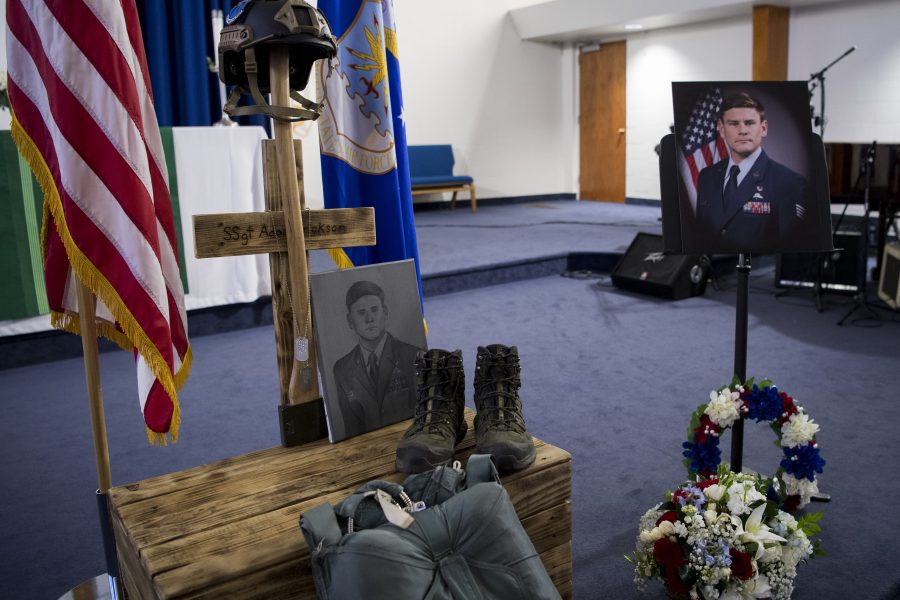An Air Force survival, evasion, resistance, and escape specialist died during a September 2019 parachute jump at Edwards Air Force Base, Calif., because he overcontrolled his parachute, prompting an uncontrolled spin and hard landing, according to a recently released investigation.
Staff Sgt. Adam Erickson with the 412th Operations Support Squadron at Edwards was conducting parachute training jumps from a civilian DHC-6 Twin Otter with an advanced parachute system for the Air Force’s Test Parachutist Program, according to an Accident Investigation Board report released April 3. The incident took place during Erickson’s second jump of the day, while performing a military free-fall with a “1.4:1 wing load,” making the parachute more sensitive to inputs.
After jumping, Erickson successfully deployed the parachute to full canopy and set up a basic landing pattern, turning to a base approach facing west at about 520 feet. While descending past 464 feet, he braked, descended about 60 more feet, and resumed full flight. At about 340 feet, he turned again to a final approach heading south.
Passing 274 feet, he made a full brake input for about 10 seconds, prompting the canopy to stall and then collapse. This started an unrecoverable left spin, until he impacted the ground and sustained non-survivable blunt force injuries, the report states.
The investigation found that the incident was caused by Erickson overcontrolling his parachute system, causing the stall and canopy collapse. Additionally, an inadequate assessment of the risks associated with the approach and a fixation on the landing zone contributed to the incident. The investigation also found the squadron’s supervision was not aware of elevated risks associated with high-wing loading on smaller parachute sizes, the report states.
“We are deeply saddened by this tragic loss. Adam touched many lives during his time here and our hearts and prayers go out to his family, friends, and coworkers,” Brig. Gen. John Teichert, commander of the 412th Test Wing at Edwards, said shortly after the incident.
